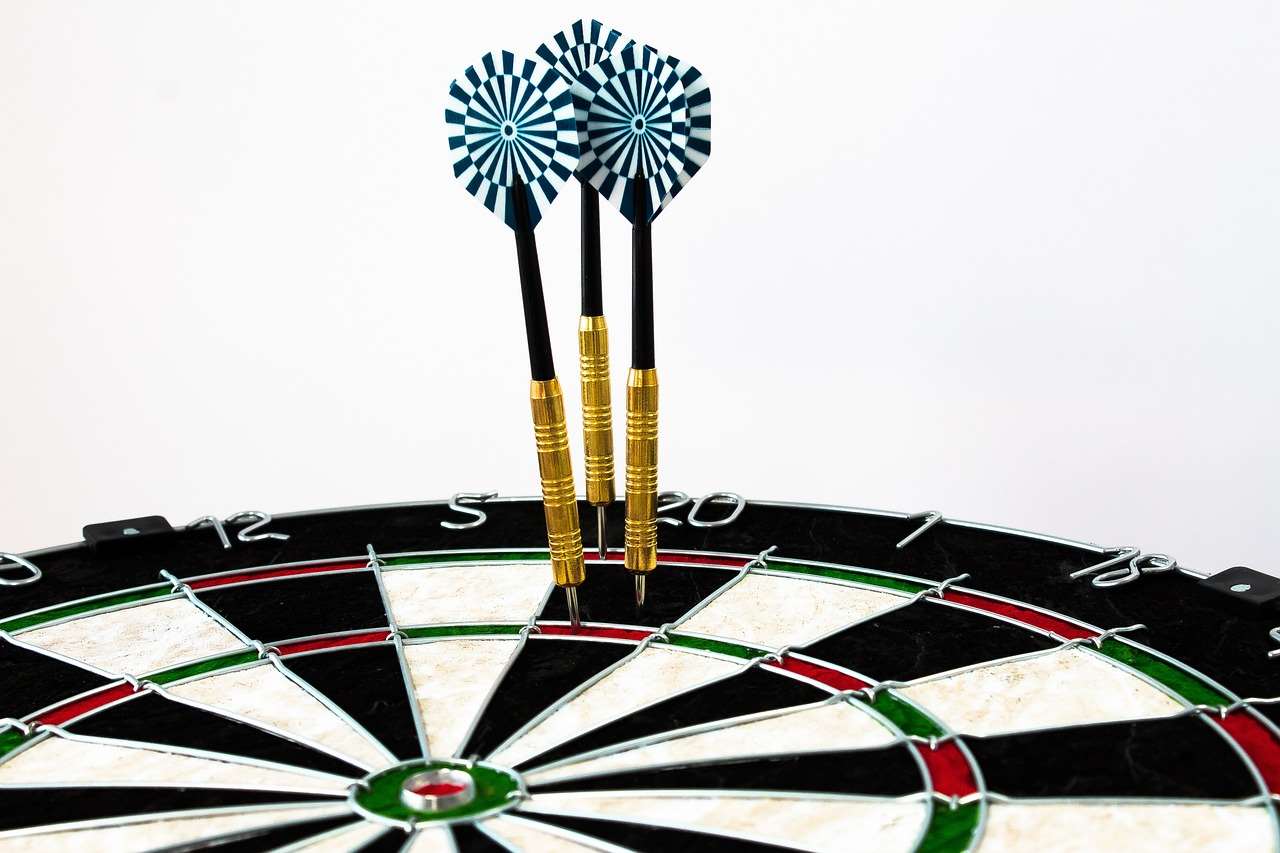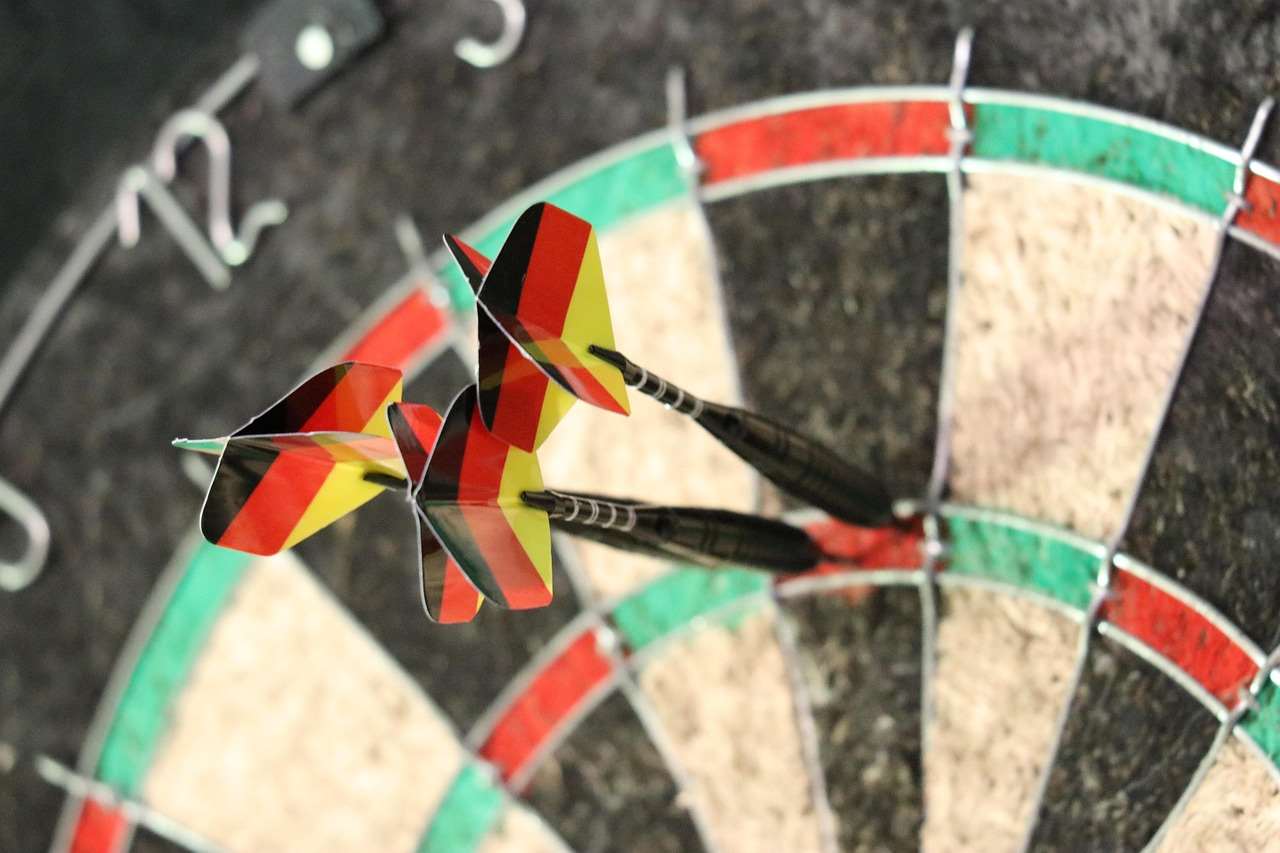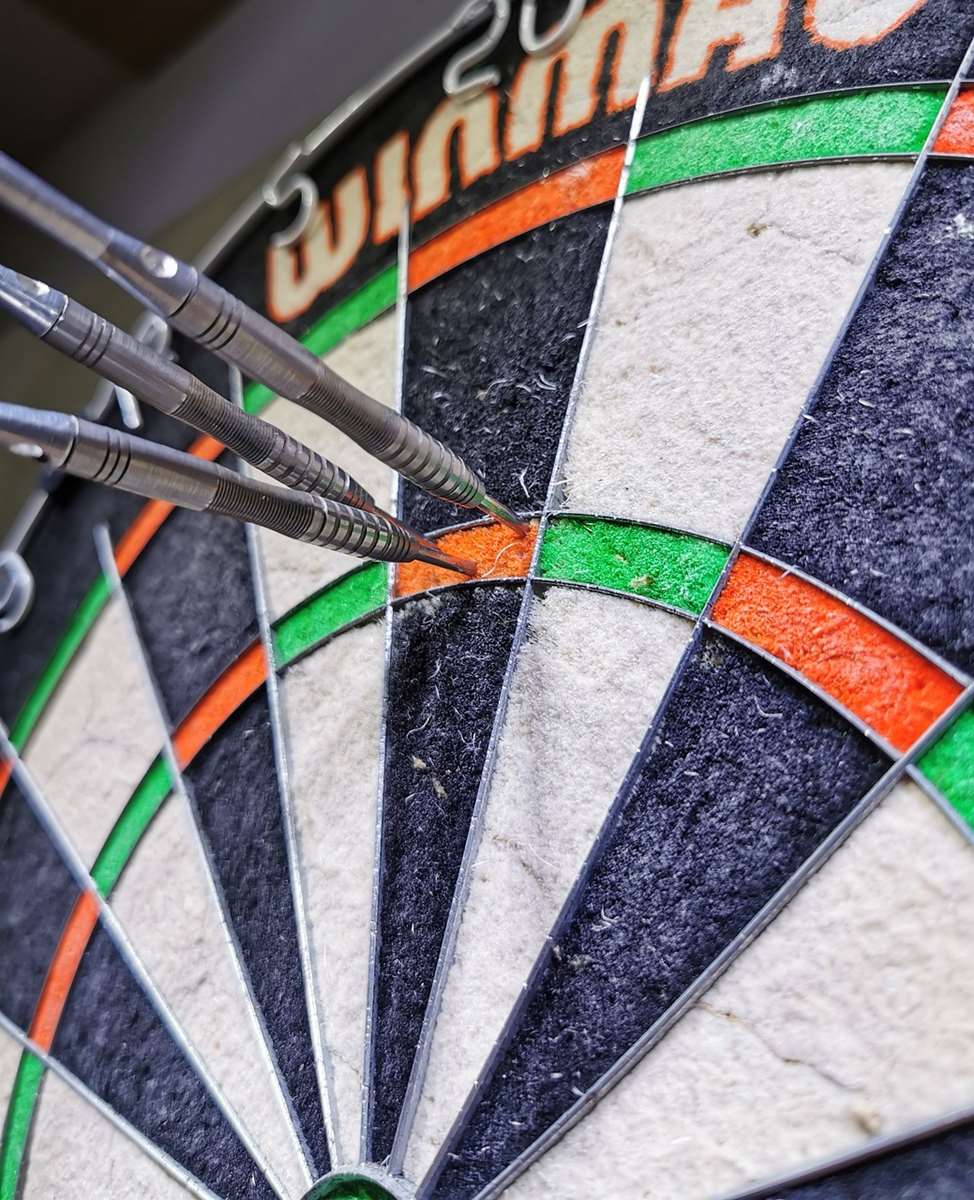Successfully **running a darts handicap league** hinges on creating a level playing field where players of varying skill levels can compete fairly and enjoyably. This article will guide you through every step of the process, from understanding handicapping systems and recruiting players to managing the league’s finances and fostering a thriving community.
⚠️ Still Using Pen & Paper (or a Chalkboard)?! ⚠️
Step into the future! The Dart Counter App handles all the scoring, suggests checkouts, and tracks your stats automatically. It's easier than you think!
Try the Smart Dart Counter App FREE!Ready for an upgrade? Click above!
Understanding Handicap Systems for Darts
The cornerstone of any successful darts handicap league is a well-defined and easily understandable handicap system. The goal is to equalize the competition, allowing less experienced players a fair chance against seasoned veterans. Before **running a darts handicap league**, you’ll need to decide which system best suits your players and league format. There are several options, each with its pros and cons.
Average-Based Handicaps
The most common approach is to base handicaps on player averages. This involves tracking each player’s score over a certain number of legs (games). The higher the average, the lower the handicap (or the higher the ‘head start’ given to the less skilled player). Here’s how it generally works:
- Tracking Averages: Implement a system for accurately recording each player’s scores. A simple spreadsheet can suffice.
- Calculating Handicaps: Define a formula to translate averages into handicap points. For example, you might award one point for every 5 points a player’s average is below the highest average in the league.
- Adjusting Handicaps: Regularly review and adjust handicaps based on player performance. This ensures the system remains fair and accurate throughout the season. Consider the implications of Modifying rules for mixed-level dart players to balance the league.
The advantage of average-based handicaps is their objectivity and responsiveness to player improvement. Players who improve will see their handicap decrease, encouraging continued development.

Points-Based Handicaps
Another option is to assign handicaps based on a points system. Players start with a certain number of points, and points are added or subtracted based on their wins and losses. This system can be more straightforward to implement than average-based handicaps, particularly if you lack detailed historical data on player performance.
- Initial Point Allocation: Start by assigning initial point values to each player. You might base this on perceived skill level or past performance.
- Point Adjustments: Award points for wins and deduct points for losses. The number of points awarded or deducted can vary based on the difference in skill levels between the players.
- Regular Review: Periodically review the point totals and adjust them as needed to maintain competitive balance.
While simpler, points-based handicaps can be less precise than average-based systems and may require more manual adjustments.
Setting Up the League Structure
Once you’ve chosen a handicap system, you need to establish the league’s structure. This involves defining the rules, schedule, and format of the competition. Careful planning at this stage is crucial for **running a darts handicap league** smoothly.
Defining League Rules
Clearly define all the rules of the league, including:
- Game Format: Specify the game being played (e.g., 501, 301, Cricket).
- Handicap Application: Explain how the handicap points will be applied during the game. For example, the lower-skilled player might start with a lead or receive extra points on certain throws. Understand the how to make darts fairer with handicap rules that will be used.
- Legs/Sets: Determine the number of legs (games) or sets played in each match.
- Tiebreakers: Establish tiebreaker rules in case of a draw.
- Code of Conduct: Set clear expectations for player behavior and sportsmanship.
- Attendance Policies: Outline rules regarding missed matches and forfeits.
Having a well-defined set of rules will prevent disputes and ensure fairness.

Creating the Schedule
Develop a schedule that is fair to all players and maximizes participation. Consider the following factors:
- Number of Teams/Players: The number of teams or players will determine the length of the season and the number of matches per week.
- Venue Availability: Coordinate with the venue to secure consistent playing times.
- Player Preferences: Take into account player preferences regarding match nights and times whenever possible.
- Balanced Competition: Structure the schedule to ensure teams/players face each other an equal number of times (or as close as possible).
Use a spreadsheet or scheduling software to create and manage the schedule effectively.
League Format Options
Consider these different league formats:
- Singles League: Individual players compete against each other.
- Doubles League: Teams of two players compete against each other.
- Team League: Larger teams compete, with multiple singles and/or doubles matches within each team matchup.
The best format will depend on the number of players, venue capacity, and overall preferences of the league members.
Recruiting Players and Promoting the League
Attracting players is vital for a successful league. Effective recruitment and promotion will help you build a strong and engaged community. **Running a darts handicap league** requires a good base of committed players.
Spreading the Word
Use a variety of methods to promote your league:
- Local Pubs and Clubs: Post flyers and announcements in local pubs, clubs, and community centers.
- Social Media: Create a Facebook group or other social media page to share information, updates, and photos.
- Word of Mouth: Encourage existing players to invite their friends and family.
- Local Media: Contact local newspapers and radio stations to announce the league.
Highlight the benefits of joining the league, such as the opportunity to improve your skills, socialize, and compete in a friendly environment.

Attracting Players of All Skill Levels
Emphasize that the league is open to players of all skill levels, thanks to the handicap system. Make it clear that beginners are welcome and will have a fair chance to compete. Highlight Basic Darts Fundamentals for Beginners to encourage participation.
Registration Process
Simplify the registration process as much as possible. Provide clear instructions and multiple ways for players to sign up, such as online registration or in-person sign-up sheets.
Managing the League’s Finances
Proper financial management is essential for ensuring the long-term sustainability of your darts league. Before **running a darts handicap league**, determine a sustainable financial plan.
Entry Fees
Collect entry fees from players to cover league expenses. The amount of the entry fee will depend on the costs involved, such as venue rental, prizes, and administrative expenses.
Tracking Expenses
Keep detailed records of all league expenses. This will help you stay within budget and make informed decisions about future spending. Use accounting software or a simple spreadsheet to track income and expenses.
Prizes and Awards
Allocate a portion of the entry fees to prizes and awards for the top performers in the league. This can include cash prizes, trophies, or gift certificates.

Fostering a Positive League Environment
Creating a positive and supportive league environment is just as important as the competitive aspect. A friendly atmosphere will encourage players to return week after week and contribute to the overall success of the league. Consider how creative dart rules for parties and social gatherings could add a layer of fun to the league.
Promoting Sportsmanship
Encourage sportsmanship and fair play among all players. Address any instances of unsportsmanlike conduct promptly and fairly. Consider implementing a code of conduct that outlines expectations for player behavior.
Social Events
Organize social events outside of regular league play to foster camaraderie and build relationships among players. This could include team dinners, pub crawls, or darts tournaments.
Communication
Maintain open and effective communication with all players. Use email, social media, or a league website to share updates, announcements, and results. Respond to player inquiries promptly and professionally.
Dealing with Disputes and Issues
Even with the best planning, disputes and issues are bound to arise in any competitive league. Having a clear process for resolving these issues is crucial for maintaining fairness and harmony. Addressing disputes is a key component of **running a darts handicap league**.
Establishing a Grievance Procedure
Create a formal grievance procedure that players can use to report complaints or concerns. This should outline the steps involved in investigating and resolving disputes.
Mediation and Arbitration
Consider using mediation or arbitration to resolve more complex or contentious disputes. These methods involve a neutral third party who helps the parties reach a mutually agreeable solution.

Consistency and Fairness
Apply the league rules consistently and fairly to all players. Avoid showing favoritism or making arbitrary decisions. This will help maintain trust and respect among league members.
Conclusion
**Running a darts handicap league** can be a rewarding experience, bringing together people who share a passion for the game and creating a sense of community. By carefully planning the handicap system, league structure, and financial management, and by fostering a positive and supportive environment, you can create a league that thrives for years to come. Remember to promote sportsmanship, handle disputes fairly, and continuously seek feedback from players to improve the league. Now, get out there and start your own successful darts handicap league!
Hi, I’m Dieter, and I created Dartcounter (Dartcounterapp.com). My motivation wasn’t being a darts expert – quite the opposite! When I first started playing, I loved the game but found keeping accurate scores and tracking stats difficult and distracting.
I figured I couldn’t be the only one struggling with this. So, I decided to build a solution: an easy-to-use application that everyone, no matter their experience level, could use to manage scoring effortlessly.
My goal for Dartcounter was simple: let the app handle the numbers – the scoring, the averages, the stats, even checkout suggestions – so players could focus purely on their throw and enjoying the game. It began as a way to solve my own beginner’s problem, and I’m thrilled it has grown into a helpful tool for the wider darts community.